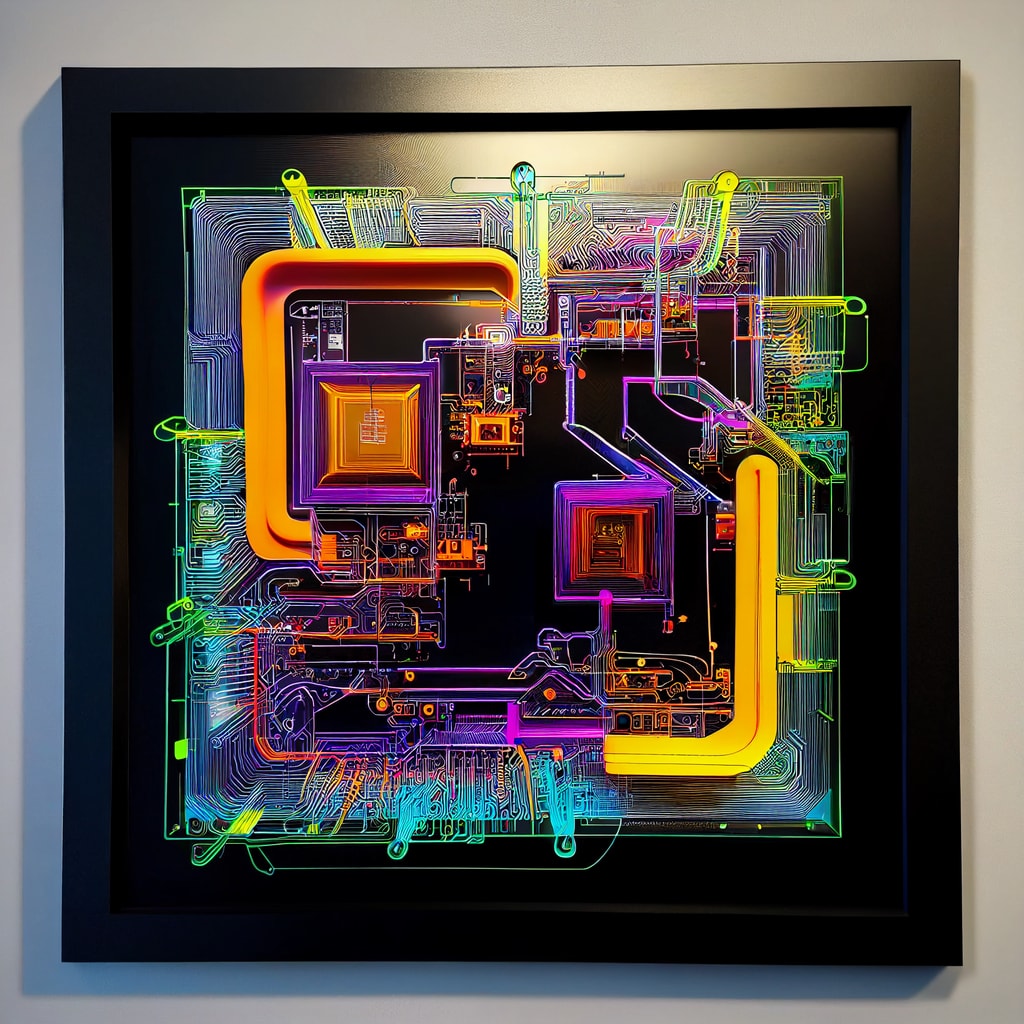What happens when humans no longer are the designers, but merely the designers of the designers? In this true story, we examine merely one example of this phenomenon: Integrated Circuit Chip Design Software. The descent into profound AI complexity has begun… the Shiny New Black Boxes are all sealed tight.
The year was 1999.
We had just moved into our shiny new Silicon Valley offices, flush with our new round of Seed Financing. There were only 4 of us then, but with another round of funding, we would soon expand to 80. The excitement in the valley was palpable: the Internet was the great new Frontier, the Wild West, and it was all ripe for the taking.
Our neighbors were a perfect sampling of the times: a search engine company (Google was still a baby, barely a year old), a online pet retailer (that was all the rage in the late 90s; remember the sock puppet?), us, and… what? Some very strange company whose sign only said “Novas.” And outside their glass door, a really weird blueprint looking thing, a framed plot about 4′ wide x 4′ tall, with an inconceivably complicated tangle of intersecting lines going every which way (believe me, the render at the top of this post doesn’t even come close). It looked like a crazy person had hijacked a computer plotter, and just said “draw 10,000 colored lines in random right angle patterns”… and yet. And yet, somehow, there seemed to be a pattern there, if I could only grasp it. Some method to the apparent madness.
Crossing the Threshold of Complexity
Well, one day, I happened to arrive at the office just as my neighbor was sliding his keycard into the slot next to the blueprint. So I seized the opportunity:
“Hi, I’m your neighbor here. If you don’t mind me asking, who did this artwork? What’s it supposed to be?”
He looked at me a moment, not sure if I was joking or not, and appeared slightly bemused, even. He then replied, in an even tone:
“It’s not an artwork… It’s a blueprint.
It’s a schematic of Motorola’s next gen chip.”
“Oh! Okay…” I replied, starting to grasp the image.
“That’s what you all do in there?
Design chips?”
“Hahahaha. No.
No, nobody’s designed new silicon for about 10 years now.
What we do, is we write the chip design software: the software that designs the chips. You tell our software the parameters: number of transistors, desired speed, physical size, stuff like that — and it renders the schematics, ready for manufacture. But no, no humans do that. These designs are way too complicated for any human to even possibly understand.”
Me: “Oh… oh my god.”
I was too stunned to even respond with a clever quip. He, sensing the conversation was complete, went into the glass door, and I… I stumbled back to my office, deep in thought.
“Too complicated for any human to understand.”
I stared at my 9-pound state-of-the-art Sony laptop. Considered the chip controlling all of its awesome functions. Some 10 million transistors on that Pentium III, running about 900 million instructions per second, (MIPS)…
for comparison: my 1981 IBM PC (Intel 8088) had 30,000 some transistors, topped out at 5 mHz, and did about 750,000 instructions per second (1/1000th the speed).
My 2020 iPhone 14 Pro’s A16 Bionic chip has some 16 billion transistors, runs at a clock speed of 3.5 GHz, and performs, at peak, around 17 trillion operations per second (that’s the equivalent of about 20 million times the power of my ’81 PC, or 20,000x as fast as my sony laptop.. yet, fits in my pocket).
And I thought: If my kitchen sink breaks, I have the tools, I have some books, I can take that thing apart, replace some rubber washers, tighten some bolts… its fixed. This… thing. This.. chip. is utterly un-repairable.
But it goes beyond that… it’s not just un-repairable… the dude next door just told me: it’s incomprehensible. These chips that run these computers that we’re running… they’re designed by software, they’re manufactured in clean-rooms by insanely high precision nano-scale robots… they’re made of circuitry whose width isn’t measured in inches, but in atoms. (as of 1999, Moore’s law was being challenged, because circuitry width had gotten down to only 3 atoms wide… precariously thin, given the 100s of miles of circuitry entangled within each and every chip made.) (the industry answered this challenge by creating chips with 3-dimensional circuity… in other words, transforming chips from single-story ranch homes into 1000-story skyscrapers, with circuits running up and down as well as left and right)
That was 20 years ago.
Machines designing machines.
We humans?
In 2022?
Well: Just sit back and eat the popcorn.
related stories on AI DesignBots:
- AI coding bots are better than 50% of professional human software engineers (Science, Dec 2022)
- ProcTHOR : Procedural generation of residential architecture blueprints and interior design elements. (Allen Inst. of AI)
- the final destination : AIs that program AI
- Tokyo: the Algorithmic Bridge

If you’re thinking what I’m thinking seeing this:
[biomimicry]
…you’re not alone.
That’s because, at its heart, AI, along with a human collaborator (dare I say: the “Intelligent Designer”?) goes through a process remarkably similar to guided evolution. It mutates a design across multiple dimensions repeatedly, constanting testing against pre-assigned constraints (does it meet the key load bearing requirements? Is it lighter than the previous iteration?)
Most of this stuff, in fact, bears a striking resemblance to human bone tissue. Why? Because nature, across hundreds of millions of years, came to the same conclusion: osseous tissue in irregular cells is an optimal load bearing design.
See it in action:

